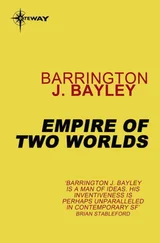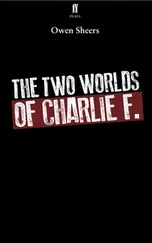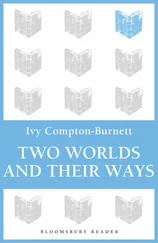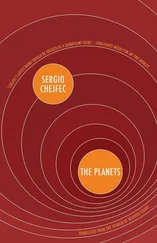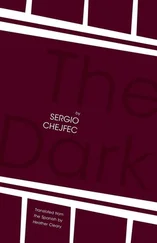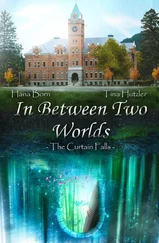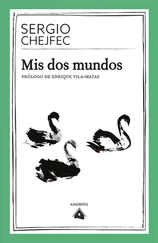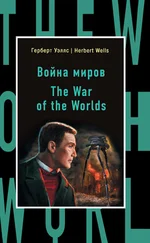Anyhow, nothing in that picture caught my attention more than the flow of the water, because it was the only object that appeared as a sign. And that inconsistency, or abstraction, compared to the veracity of the other components — which were in keeping with their natural proportions and with the verifiable nuances of light — made the representation of the jets more authentic, because in this way they proved double, or bifronted. It was a symbol, that is, the flow of water had an added materiality at the same time it lacked one. Was it water or was it a different element? Because in all likelihood an old route was being shown, or simply a prediction: the place through which the water jets ought to pass.
As might be readily expected, after having this thought I began to imagine a world made up of dotted lines, the indecisive sketch of its contours, the design of its relationships. Just as with the water, one could trace sounds, physical trajectories, material changes and the passage of time. The line denoted the relationship between objects, which could be of the same nature or not. But naturally, since this was a physical representation, each connection lingered on, permanently drawn on the paper, superimposed on earlier or later ones, creating the “fountain” effect I mentioned before: a weft of dotted lines that crisscrossed, and whose arcs ended up a bit tangled, delineating a complex skein; not illegible, with some effort, just slightly chaotic. And in that denseness I found a kind of dramatic consistency, as much in the most immediate, theatrical sense, as in the tragic sense: the fatuous display of the real as the triumph of destiny.
I don’t know what came over me. This interpretive behavior or feeling so conquered me that when I saw a distant hiker pouring his maté, I immediately reconfigured the stream of water, which was of course invisible to me in the distance, as a dotted line that dropped from the lip of the thermos making a curve. The line I restored had an extra feature: it bulged a bit exaggeratedly, was rounder and more pot-bellied than in reality, the better to stand out. The addition of the curve, the paunch, stood for the price of becoming visible and, in the process, acquiring consistency. That’s why I’m not exaggerating when I say that for me that afternoon in the south of Brazil the world was transformed. From one single and simultaneously inconsistent place, the universe reorganized itself at will, according to relationships that were always visible. In the middle of the day, what was visible was radically unsettled, or better still, it appeared in a form until that moment wholly unknown, at least not by me. .
I decided to leave the bench and resume my walk. I looked over to where the old man was sleeping: he hadn’t moved, other than swatting the occasional insect. I looked at his hands, folded together over his belly, and only then did I realize that the book I’d taken out when I sat down was still in my lap; at one point I’d opened it, surely like those readers on trains or in waiting rooms who interrupt their reading, look up, sit there rapt in something, and don’t start reading again for quite some time. I had fallen into one of those reveries, I realized now, and I also knew I wouldn’t return to the book for the rest of the day, or even attempt to.
The alameda that served as a stage for the monumental fountain opened out impressively; it must have been a hundred-odd meters long and some thirty meters wide. It offered two parallel walkways, which ran its entire length, crossed every few meters by transverse paths. Between the walkways was a narrow watercourse, half-concealed by the paths, beneath which you could make out small cascades or locks through which the water travelled on its way from the fountain. Trees surrounded the area with an equal denseness. Given the land’s gentle downward slope, from its topmost point the alameda seemed more extensive than it really was; but above all it looked like a startlingly geometric clearing amid the dense plant life, because wherever one looked one could make out, under the green of the trees, shadowy masses, spaces at first sight overgrown and impenetrable. I headed off down one of the walkways. On my right I could distinguish something like an Oriental garden, or strictly speaking Japanese, with a great number of stones and promontories, shallow waterfalls, and very narrow canals that connected two ponds that were equally diminutive, given the scale of their surroundings. From a distance I saw too, a number of sculptures, of a Buddhist sort, solid and dark gray, which because of the contrast these made with the innocent wooden bridges scattered here and there gave the garden a mien that was somber, even threatening, rather than harmonious.
Toward the left of the alameda, in the other area, stood a dense forest, broken at times by a few small clearings where they’d set out rustic tables for snacking or picnicking, or both things at once. I spied three men sitting around one of these tables, devoting themselves to what appeared to be a game, dominoes or cards, I couldn’t tell. Needless to say, I had reason to doubt my first impressions; the dominoes may have been a misperception, a mere whimsical transposition of images from the past, of those facts, perennial in their way, that alight in one’s memory and lead a furtive life there, surface occasionally and are then obliterated until their next appearance. I recalled a fairly hot summer, in another city. The doors and windows in the neighborhood open day and night, the neighbors avoiding the insides of their houses, etc. I remembered the dry slap of the dominoes on the tables set up in the street or in courtyards and gardens. Sessions that lasted for hours. Several games were most likely being played, one after the other, but as a result of the repetition and the unrelenting heat, these turned into a single game that never ended. As a background to the slapping of the tiles, you heard the murmur of voices; it was the conversation that flowed on, independent of the game, to be interrupted every now and then by long intervals of silence, or, depending on the ups and downs of the play, by a volley of shouts that died away almost instantly. And it wasn’t just one table, there were hundreds spread out all over the neighborhood, from which the sound of the slapping Bakelite would carry distinctly, although that didn’t matter, because given the similarity of the sounds, one could reconstruct those that were the faintest, determine their true source, and above all, their true color.
I went on considering the waves of sounds that ran like currents and seemed to work by emulation. I would hear them far off, then near, I’d feel how they enveloped me, little by little, then left me behind, their aftereffects slowly fading, and so it went, several times a day. I was capable of finding a poetry in that, but even to me, accustomed to being satisfied by so little, it seemed obvious. As is evident, I was growing gloomier and more fatalistic. Maybe that’s why I thought it all too likely that the park would offer me no other varied or interesting things, though it’s true that at that point in the afternoon — or more generally, in my life — I could no longer be sure of what I expected. I then decided to find the closest exit. I wanted to return along a different route and perhaps in this way come across some impressive monument, a grand gateway arch, the iconic portal, I don’t know, because everything told me that I’d approached this park haphazardly, and it had therefore revealed itself to me slightly at random, failing to display its potential pathways or its perhaps intentional contrasts. On the whole, the same thing always happens to me. I set out from the margins or at the back doors, and that obviously determines how my impressions unfold. A handy example is the aviary, a place whose melancholy had surprised me, and which I had no desire to visit again; its melancholy would probably have moved me if I’d come across it in another sequence. I no longer remember the aviary in that way, but I was still under the effects of the place, the silence typical of caged creatures. And so, desiring to escape my own associations, I left the Buddhist area behind and took one of the side paths to the right, which led into the heart of the park, crossing it diagonally.
Читать дальше

